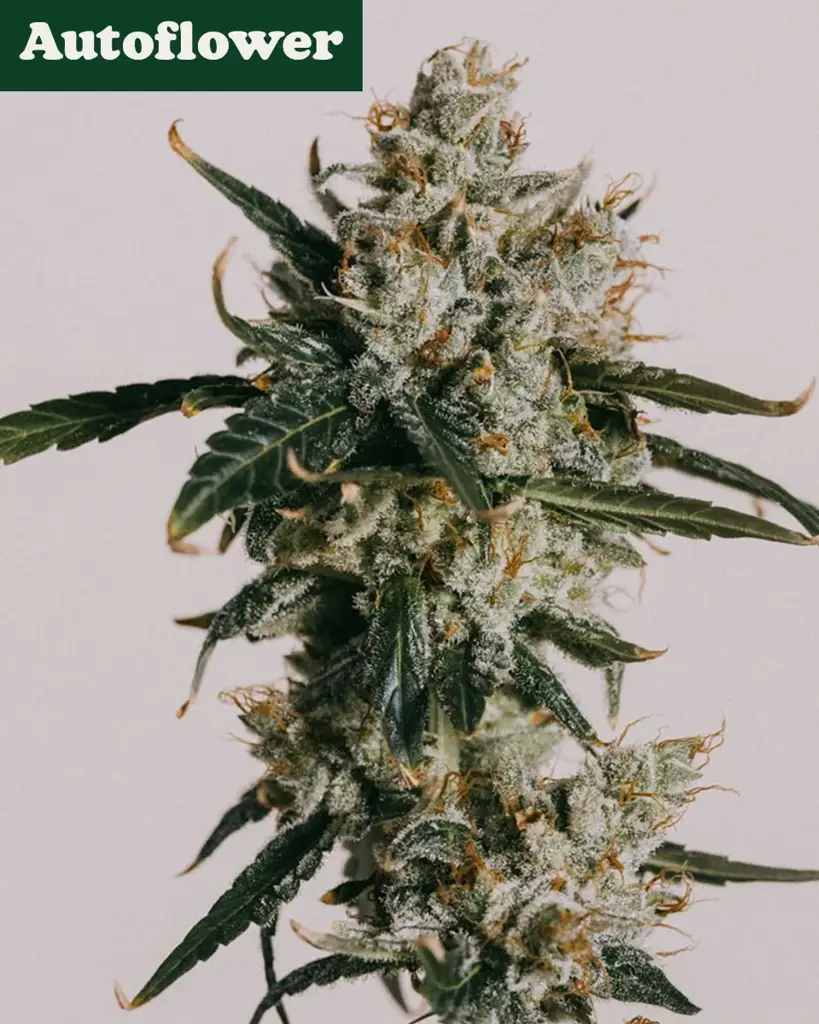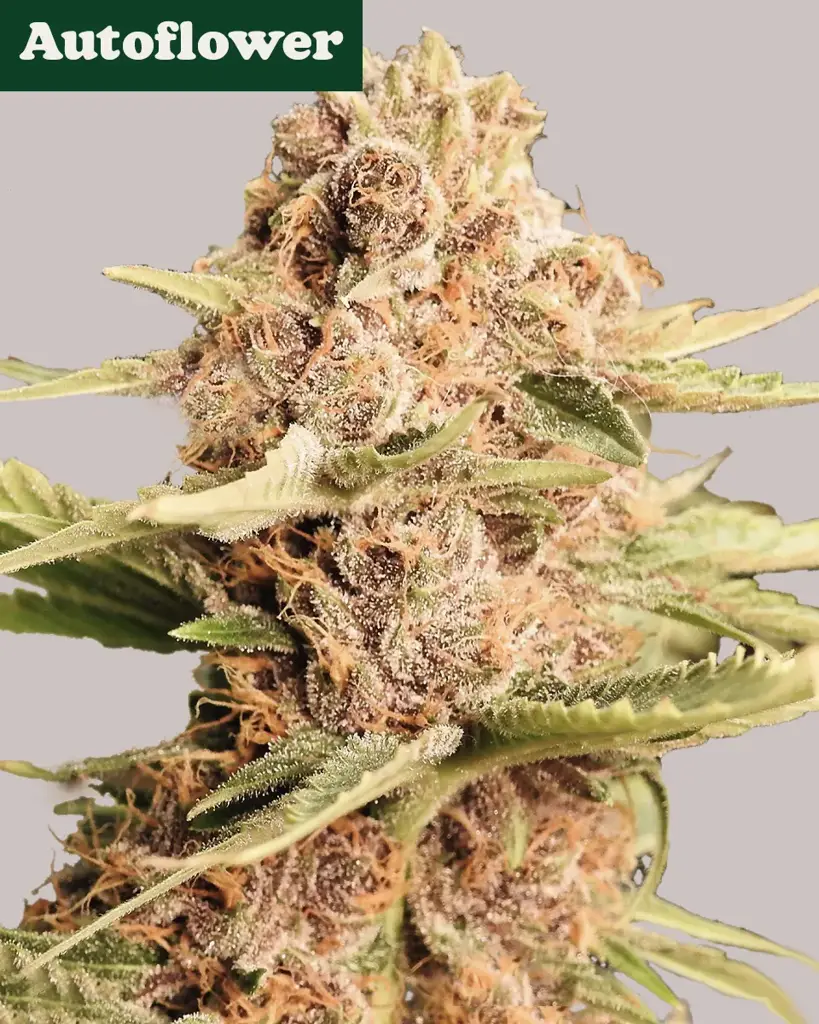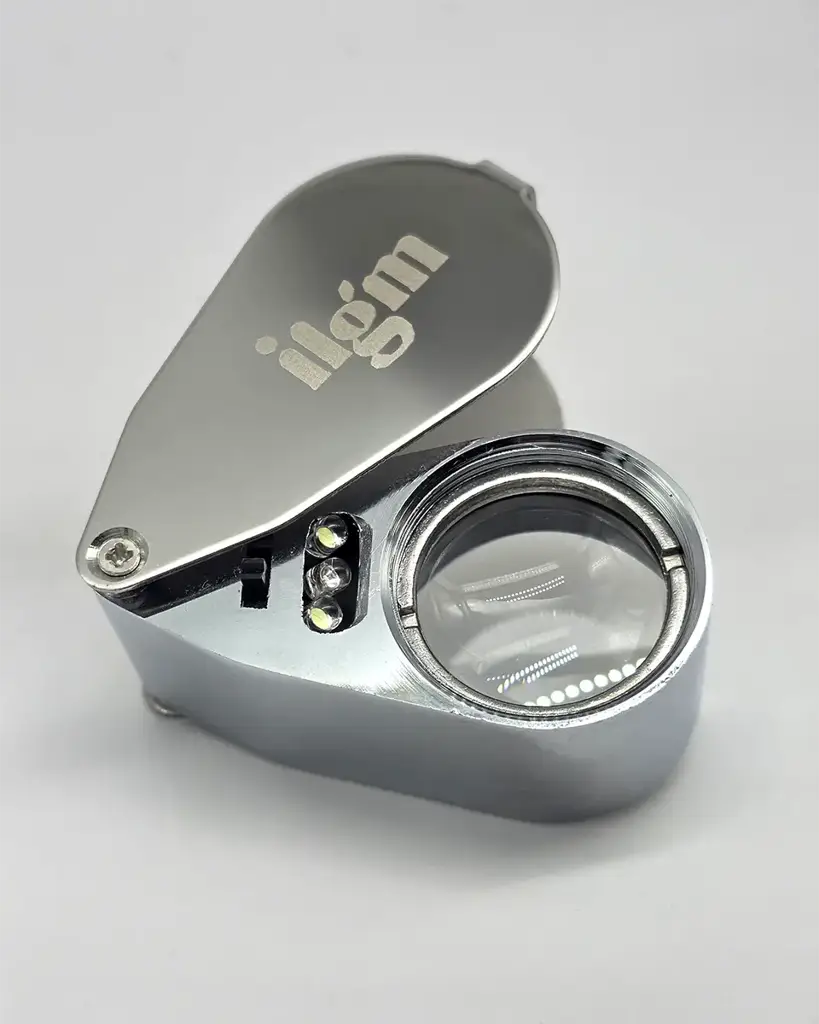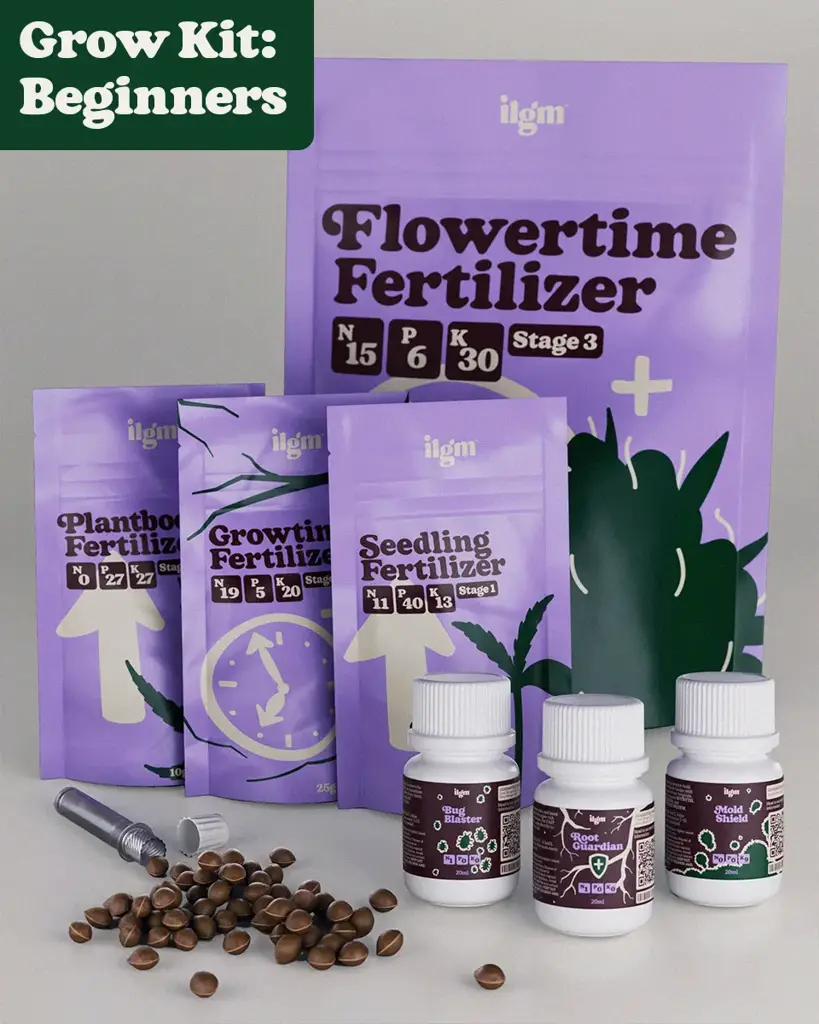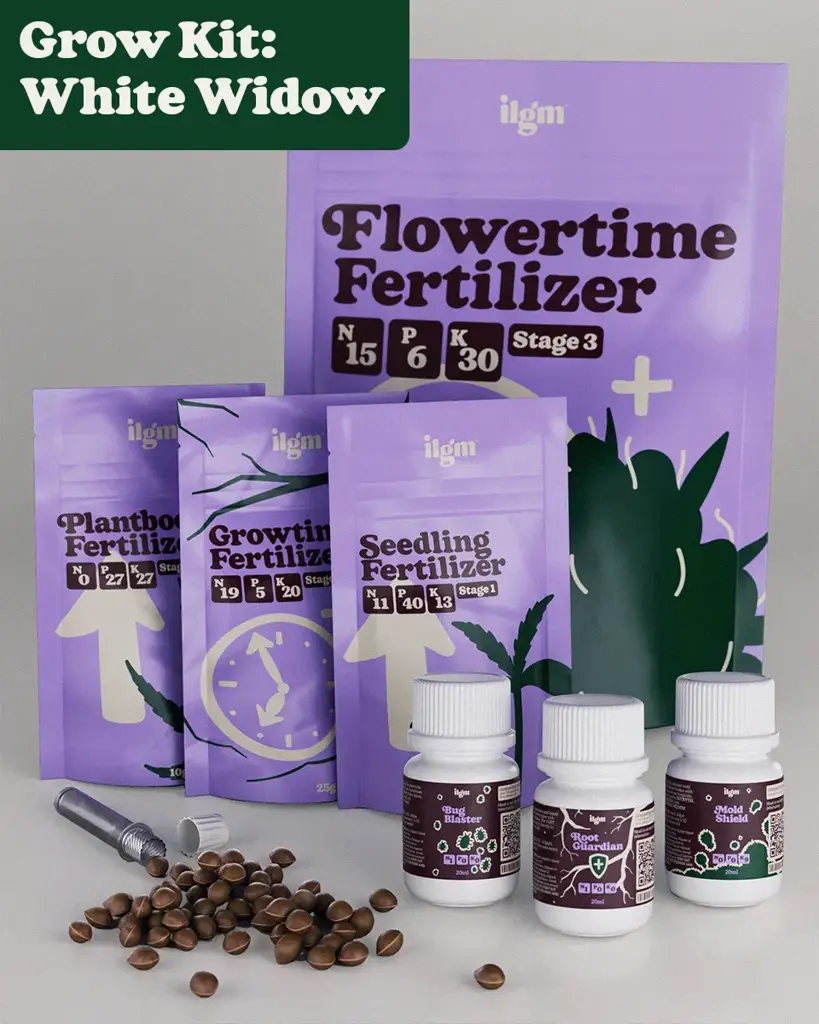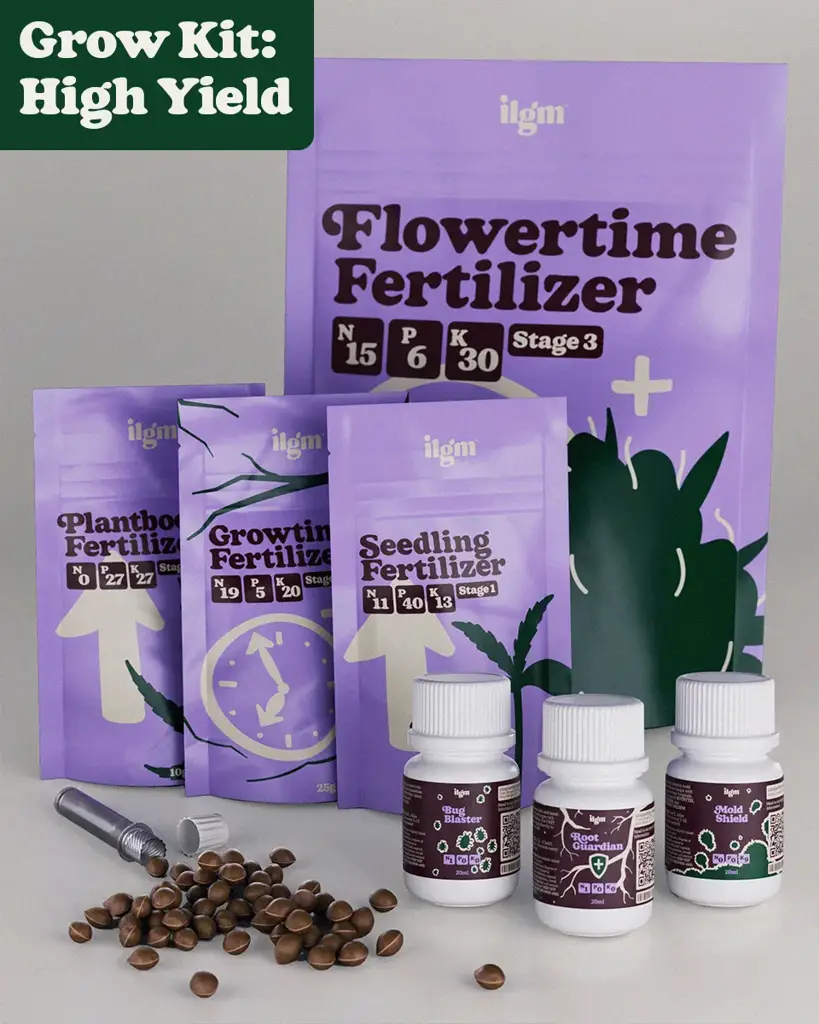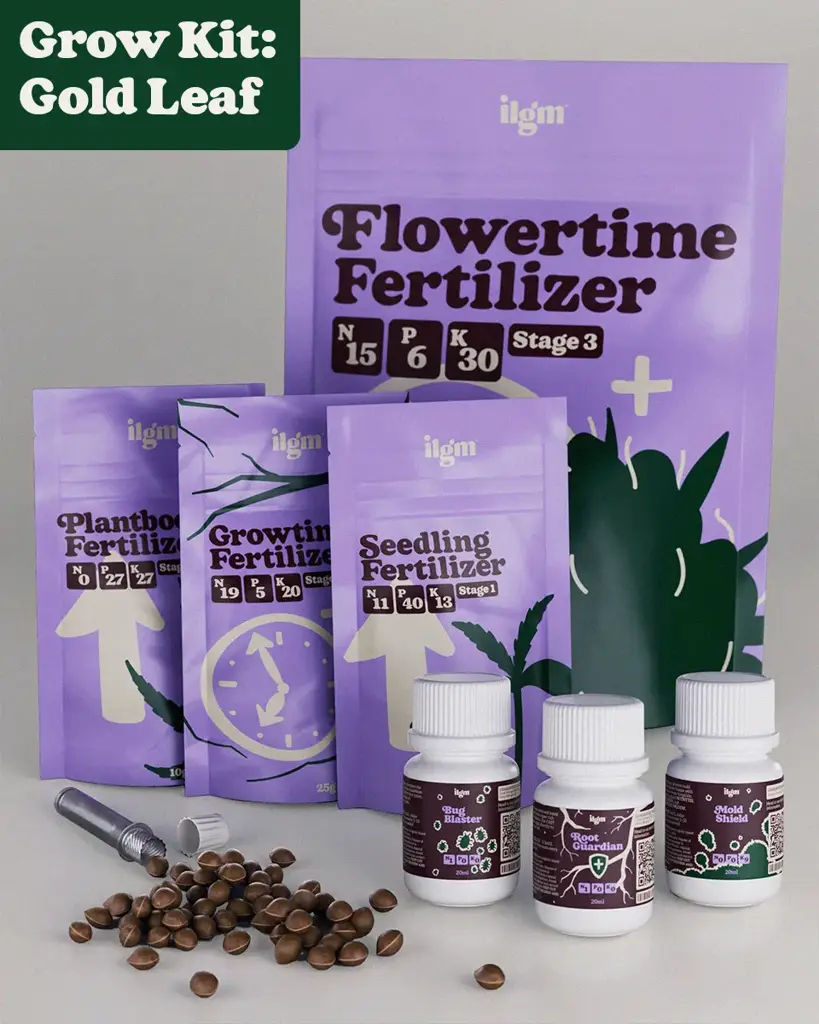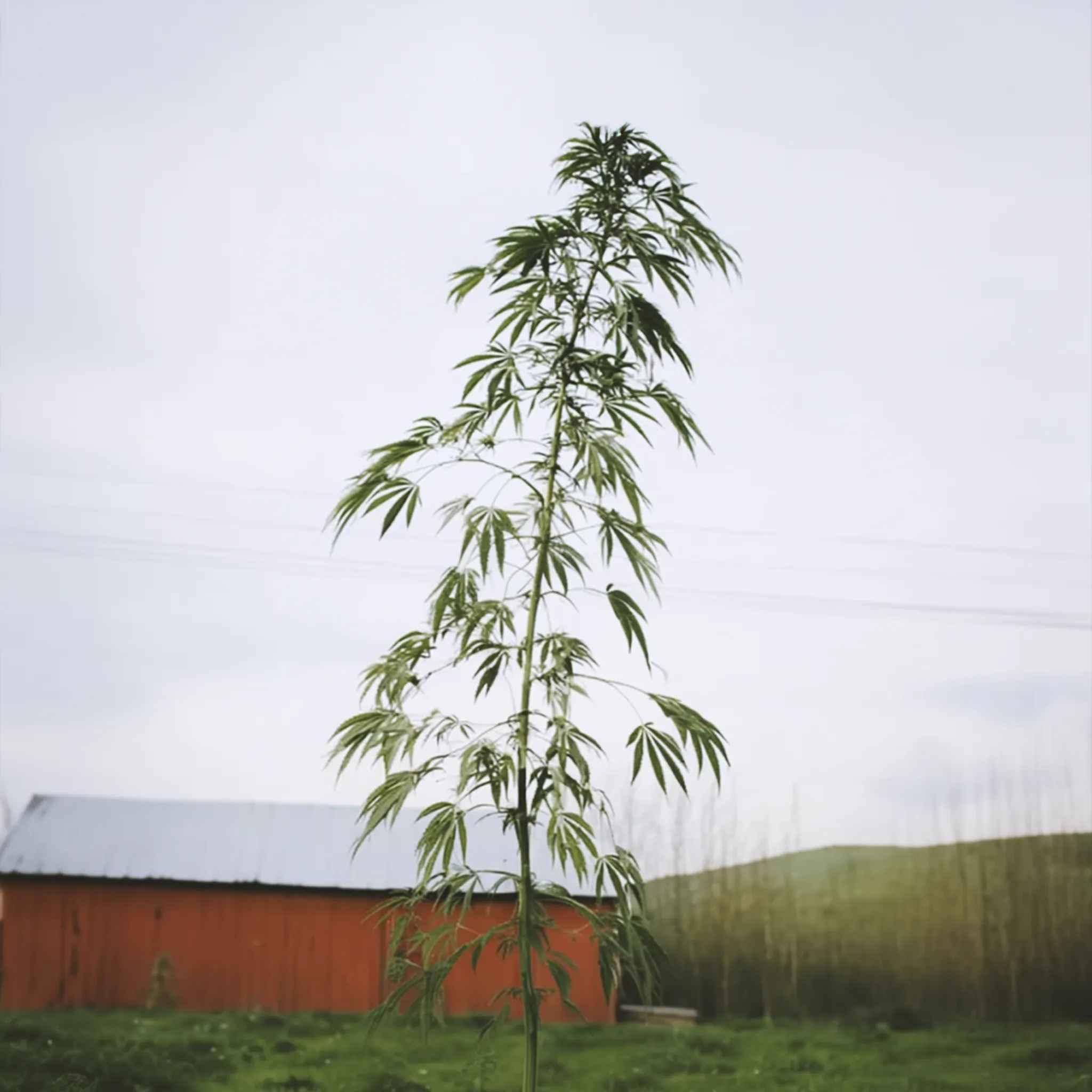
Stretching Cannabis Plants: What It Is and Why It Matters
One of the many thrills about growing your own cannabis is getting to see the range of expression that each plant has. Some plants have big frisbee-sized leaves, while others have small and narrow ones. Some plants grow tall like trees, while others grow like squat bushes. Regardless of how the different varieties grow, they all have something in common: the stretch.
Table of contents
The amount that each plant will stretch varies, but “the stretch” is a natural part of the cannabis growth cycle. Growers can use the techniques and tools discussed in this article to manage natural and environmentally caused stretching. With the ability to control stretch, you will open your options to the variety of cannabis plants you can grow at home.
What Is Cannabis Stretching?
Cannabis stretching refers to rapid vertical growth, and this predictably occurs at the onset of flowering. Stretching at flowering is typically more pronounced in regular or feminized seeds, but it also occurs with autoflower seeds. Sativa varieties tend to have more stretch than indica-leaning strains, but there will always be exceptions to the rule.
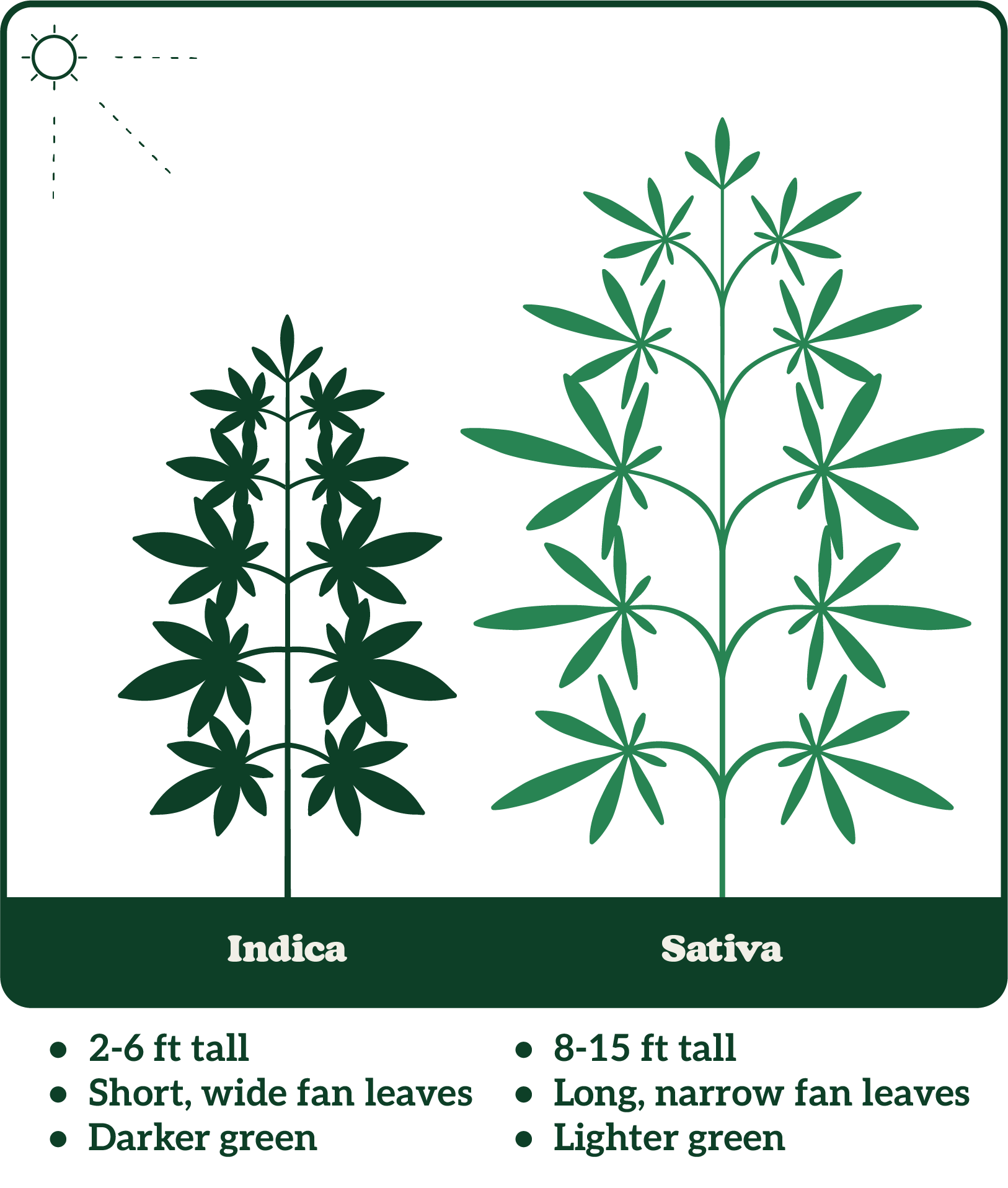
The amount of space along the main stem between each level of side-branching is called internodal spacing. When stretching occurs, there is often an increase in the internodal spacing in the new growth. You can measure stretch by both vertical height and internodal spacing. Some causes for stretch are natural, while others may be due to conditions in your grow tent.

Our Bestsellers
When Do Cannabis Plants Stretch?
Simply put, cannabis plants stretch most as seedlings, and when they begin to flower, although poor conditions can lead to stretching at any point of the grow.
Plants may experience small bursts of growth after being watered or fed, but those bursts don’t compare to the 2-3 weeks of rapid growth at the onset of flower. With the exception of autoflower seeds, plants must be given a 12-hour on/12-hour off light cycle to begin flowering. This is when the anticipated stretch phase starts.
Growers may not see a big difference in the first few days, but some cannabis plants can double or even triple in size by the third week of flowering. I’ve found that most plants are done with the stretch phase around day 21 of flower. This holds true for both indoor and outdoor growers.
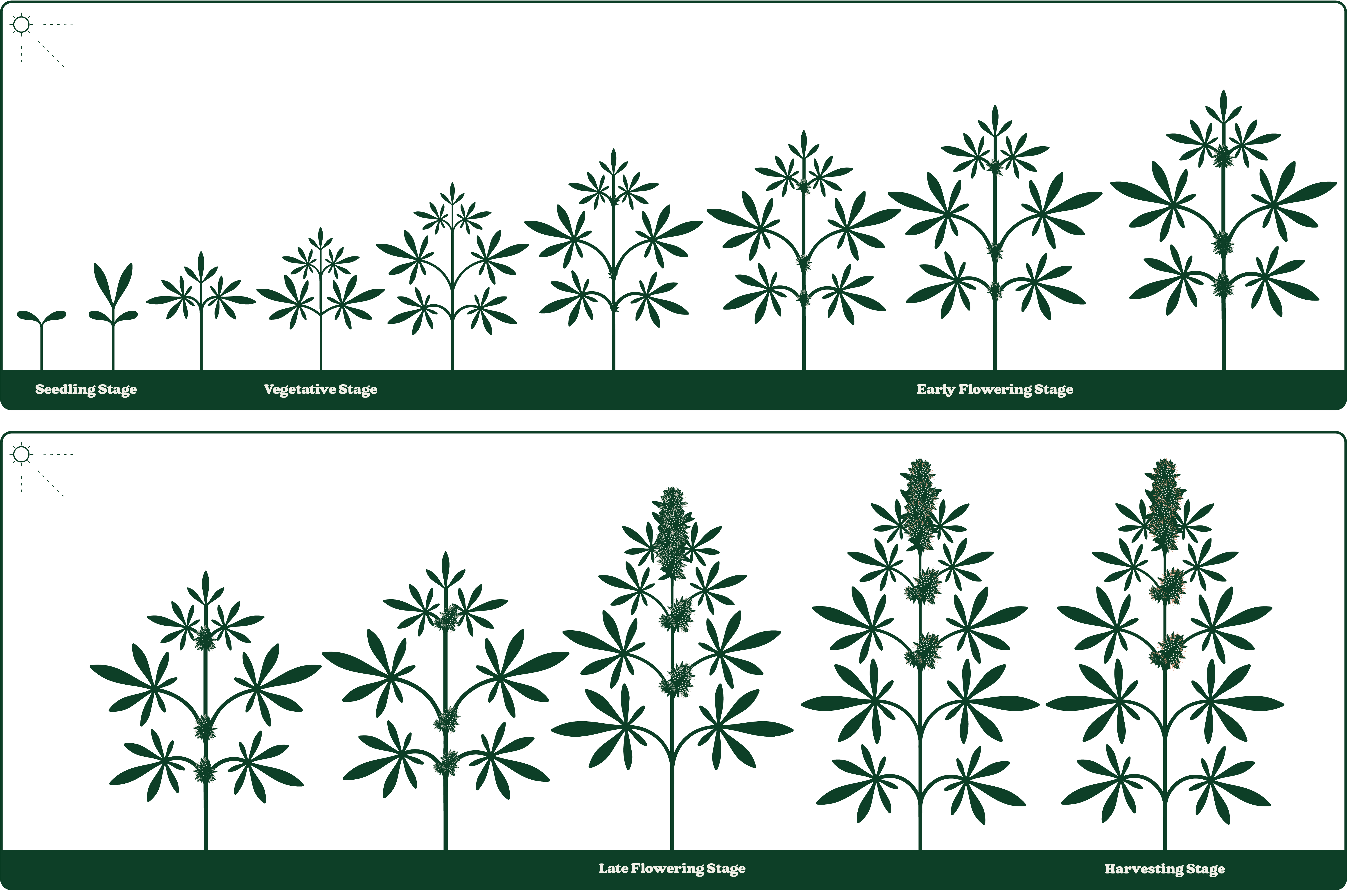
Why Do Cannabis Plants Stretch?
Genetics will play a role in the final height and internodal spacing, but environmental factors, such as the amount of usable light, can significantly influence the stretching of cannabis seedlings. Plants crave solar energy, so if they are not getting enough, particularly as a seedling, the plant will stretch upwards to get more of the desired light energy.

The same goes for a grow tent that is too full. Plants have a phenomenon called “shade avoidance syndrome” (SAS). If light is being blocked by a neighboring plant, the shorter plant puts all of its energy into growing taller so that it is no longer in the shadows.
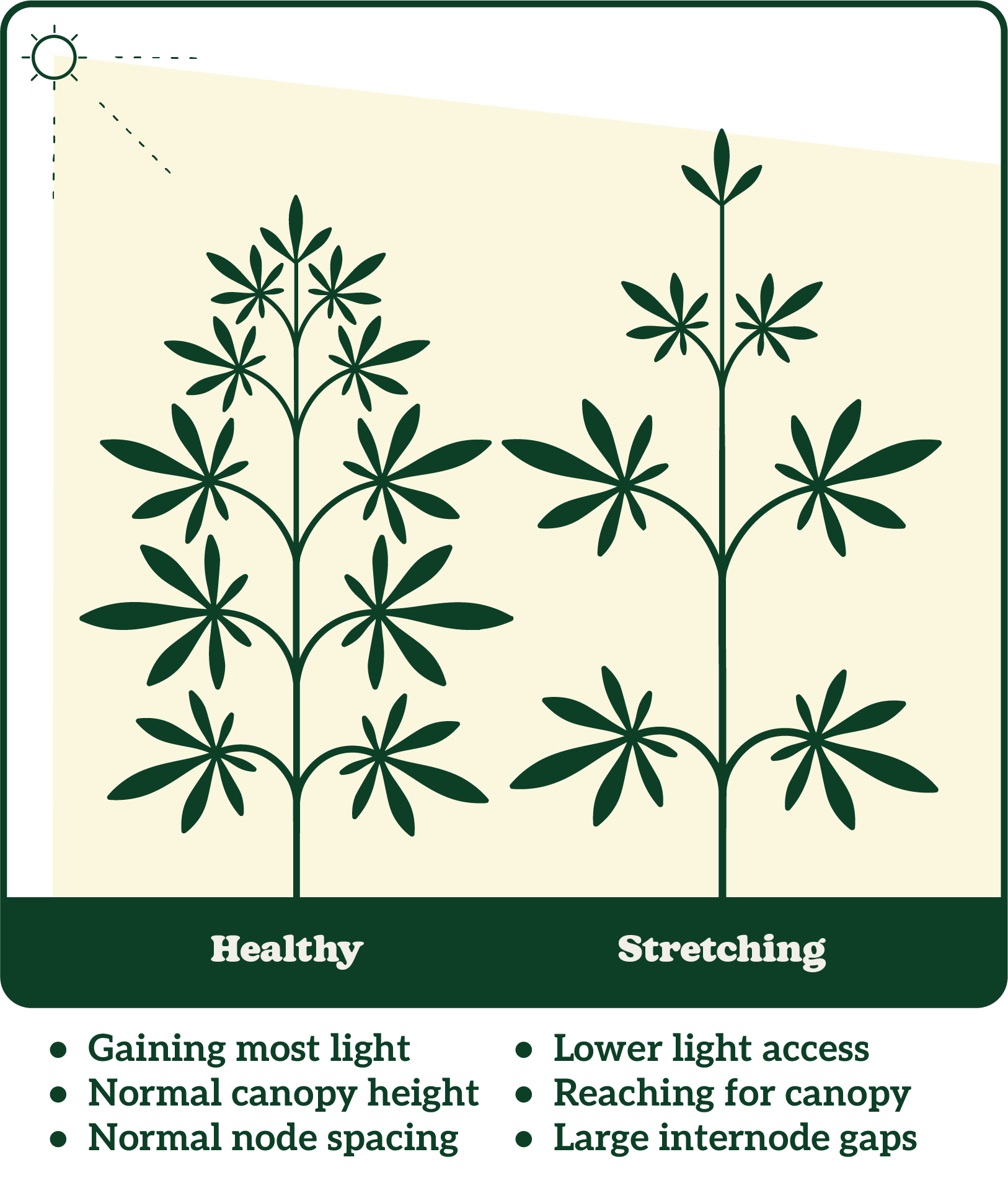
The Light spectrum within the PAR range will influence the growth patterns of plants. Lights that have more of the blue spectrum will produce cannabis plants with shorter internodal spacing. This is why Metal Halide (MH) bulbs are a popular option for vegetative growth if using an HID system instead of LED.
The red spectrum, more common in HPS bulbs, can cause stem elongation, but it also promotes flower onset, which is why it is commonly used during the flowering stage. LED lights offer a white spectrum, which is better balanced for both vegetative and flowering growth.

Temperature can play a role in plant stretching and growth. High temperatures increase uptake from the root zone, which will increase plant growth, whereas a cold grow room reduces uptake and reduces healthy growth. Too much Nitrogen in the soil can also contribute to rapid bursts of growth that elongate internodal spacing.
Why Should I Keep Stretching in Check?
Stretchy plants often produce thin branches. Thin branches require support when the heavy buds form, which can be a logistical headache to accomplish. As growers, we have the opportunity at the start of our grow to prevent stretchy plants. Our goal as growers is to keep the stretch in check so that we have a solid foundation for future growth.
Thin stems and branches aren’t as efficient at moving nutrients. Tall, stretchy plants put a lot of growth energy into supporting branches and building cell walls instead of the buds. Remember, we’re growing this plant for the flowers, not the stalks.
Taller plants also mean more distance between the light and the majority of bud sites, creating a difference in light intensity. We want maximum light on as many bud sites as possible, which is why plant training to create a level canopy can be so important.

Don’t get me wrong, the space between branches improves airflow and reduces the potential of pathogens like powdery mildew (PM) or botrytis (bud rot). However, our goal is to yield as much flower as we can from each cannabis plant. Grow buds, not lumber.
How Do I Prevent Stretchy Seedlings?
Preventing stretchy plants begins before they even break the soil (hint: it’s how you fill your pots). I’ve found that almost all seedlings will experience a rush of growth as they emerge from the soil, and I use these three tricks to control the stretch. Starting your plant off with a solid base (no pun intended) is crucial for a massive harvest later.
1. Backfilling soil: Cannabis seedlings can be buried up to the cotyledon (those two green flaps that open when the seed sprouts). Most seedlings will break through the soil with the cotyledon leading the way. Seedlings then typically stretch a few inches above the soil and can become floppy.
By filling your container a few inches shallower than you normally would, you can add soil up to the cotyledon, giving the seedling more support. You can backfill in the original pot or at the time you transplant into a larger container for vegetative growth.
2. Get your light right: I’m talking about three factors - distance, intensity, and spectrum. The distance at which you hang your light will affect its intensity, but the recommended height will vary depending on the wattage and efficiency of the light you are using. We’ve created tutorials discussing light hanging distances for the different wattages.
Essentially, get the light as close as you can without frying your sensitive seedlings. Lights with dimmers help accomplish this. Windowsills are not a good option and will almost always produce leggy, weak seedlings.
As mentioned earlier, the light spectrum plays an important role. The blue spectrum reduces stretch and keeps the internodal spacing tight, but we don’t want to use just blue light. There still needs to be other spectrums for optimal growth.
Most LED grow lights offer an excellent balance of all spectrums. Some LED lights will have a “veg” option or a “bloom” option, which generally means either more blue or red, respectively. Blue is best for seedlings.
3. Environmentals: Temperature and airflow will impact the stretch of your seedlings. Once the seeds are above the soil, aim for a temperature range between 70–75°F (21–24°C). This will encourage growth, but not as rapidly as higher temperatures. It is OK to run a higher than average humidity level during the seedling phase, but keep the humidity below 70% and above 60% if possible.
Use your circulation fan in the tent to provide a gentle breeze around your seedling. Use a low fan speed, but if your fan doesn’t have speed settings, try bouncing the air off a tent wall before it hits the seedling. A gentle breeze will thicken and strengthen the stem. Too strong a breeze will blow your seedling right over.
I prefer not to use crutches or other supports for stretchy seedlings because it doesn’t address the problem, although using support is a common solution. Backfilling is my main tool. The #1 reason I’ve seen for stretchy seedlings is a lack of light intensity / a light positioned too far away.
How Do I Control Stretching in Flower?
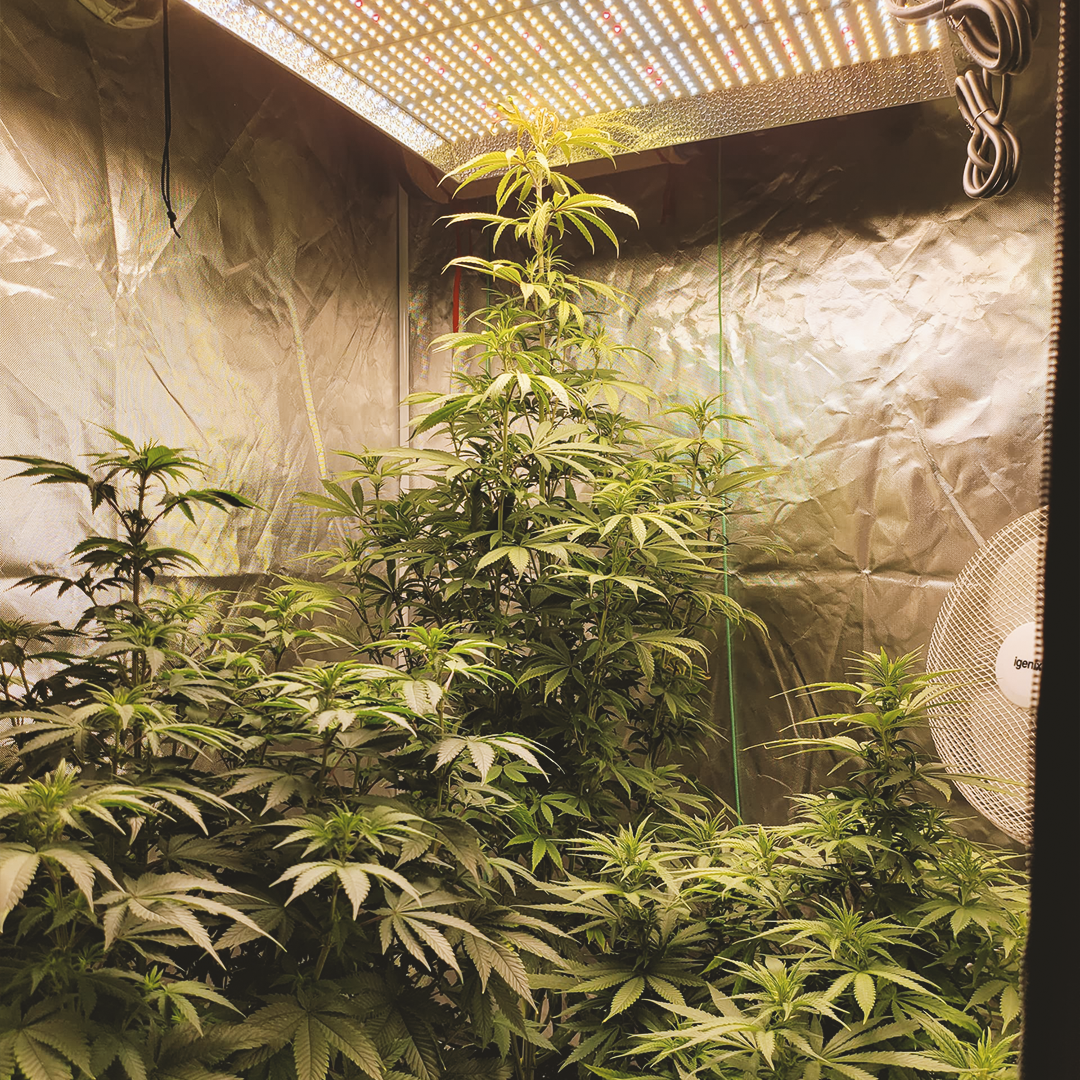 Stretching plant by our forum user jadders
Stretching plant by our forum user jadders
Growers can encounter height issues during the stretch phase of flowering for a few reasons. One of those reasons is that you let the plant vegetate for too long. The stretch phase, beginning at the onset of flowering, can double the height of your plant, so anticipate this. For long-flowering plants or plants that you know have considerable stretch, use a shorter vegetative duration.
Selecting genetics that best suit your grow space can also help keep height in check. If you have low ceilings, you may prefer the compact shape of most indica strains. Indicas will generally stretch less at the onset of flower compared to the taller sativa-leaning strains. Sativas can grow very tall.
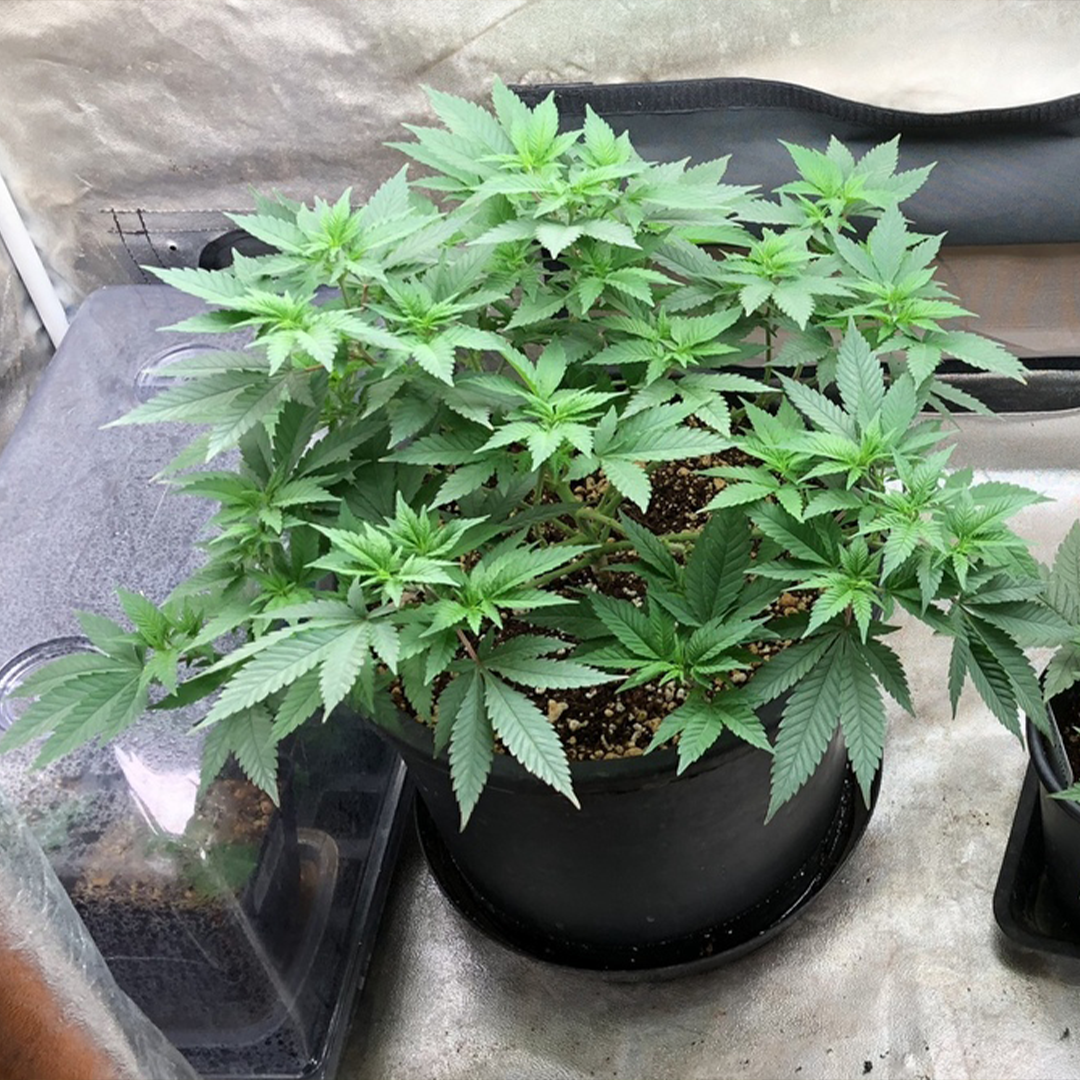 If your grow space is low, go for indica-dominant cannabis strains. They grow less tall. Image courtesy by our forum user Walt80
If your grow space is low, go for indica-dominant cannabis strains. They grow less tall. Image courtesy by our forum user Walt80
Plant training techniques, such as topping, fimming, and LST, are methods for managing canopy height. They can be handy tools for creating a level canopy. Another popular option is the use of a SCROG net. As the plants go through a rapid burst of growth, branches can be directed horizontally by tucking them under the screen.
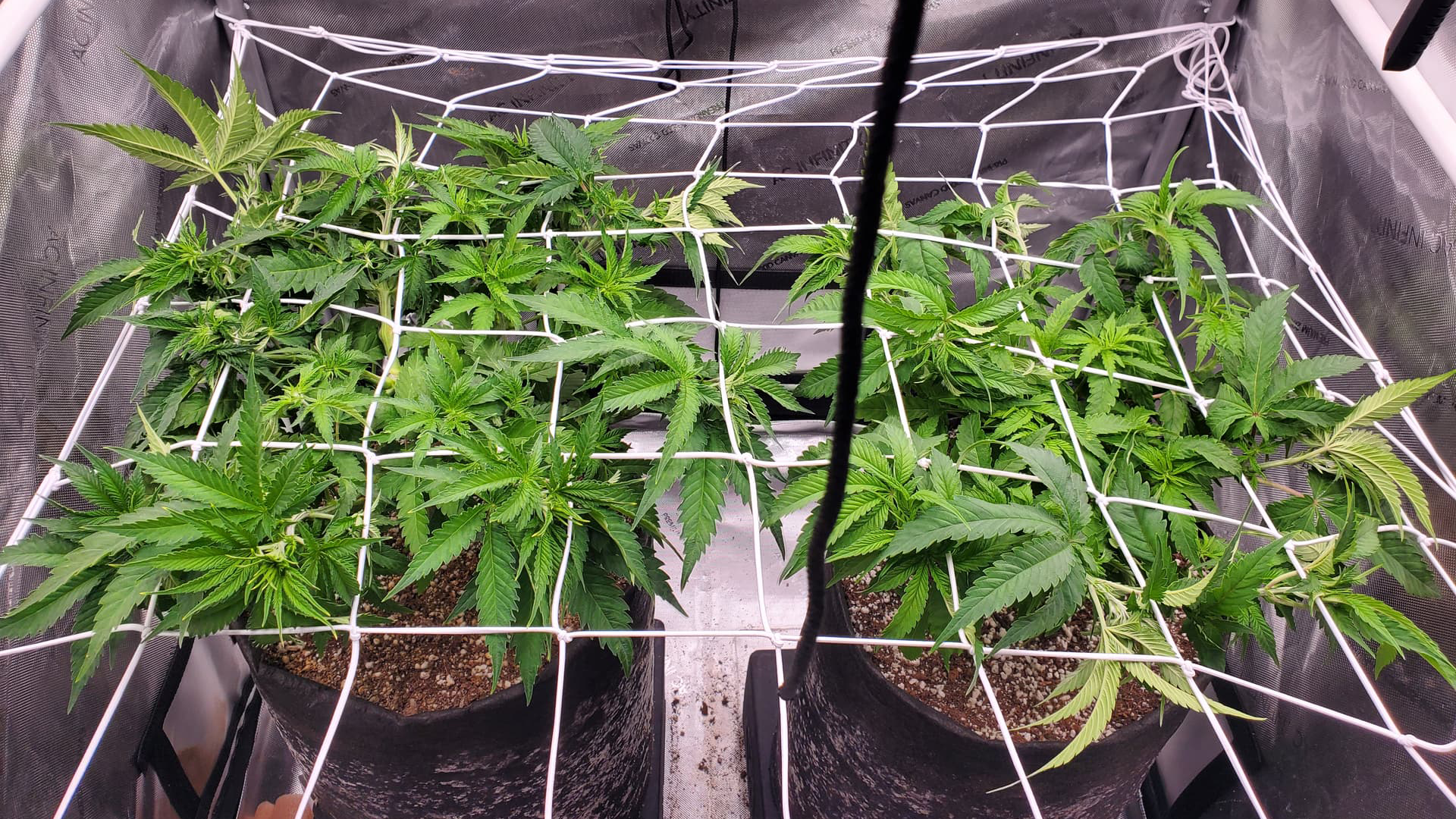 Fanning out the branches by using the scrog method is great the keep the canopy low and even. Image by our forum user BigL703
Fanning out the branches by using the scrog method is great the keep the canopy low and even. Image by our forum user BigL703
Not only do SCROG nets help you control the stretch and maintain an even canopy, but they can also help you maximize the space in your tent. Directing branches horizontally creates more bud sites that receive optimal lighting.
Avoid overcrowding in your grow tent; try to prevent taller plants from overshadowing your smaller ones. Defoliate when necessary to improve airflow and be sure your temperatures are in the optimal range.
Another way that can keep stretching to a minimum is by keeping the lights-off temperature within a few degrees of the lights-on temperature. Although this has been documented in other plant species, I’ve experimented with this a few times, and I’ve never noticed an easy-to-distinguish reduction of the stretch during the onset of flowering.
Can You Stop Stretching Once It Starts?
You won’t be able to reverse any stretching that takes place, but you may be able to adjust conditions to reduce further stretching. Options range from topping or training to manage a plant that has already stretched. Adjusting the lights and making sure that the temperature stays within the desired range can prevent further stretching.
As growers, we can select genetics from the start that don’t grow very tall. We can also decide to flip our plants from the vegetative stage to the flowering stage sooner. There are many ways that we can anticipate and manage the stretch, whether that be in the seedling stage or at the flip.
Stretching Is Normal—But Too Much Wastes Bud Potential
Remember, we’re growing for buds, not lumber. Don’t be afraid of the stretch phases, just be aware of them. We want our plants to get off to a good start, so we sometimes worry when our seedling shoots straight up into the air. Seedlings will naturally stretch, but if you use the backfill technique, a gentle breeze, and the right light intensity, they will thrive.
In my decades of growing experience, I have yet to see a plant that didn’t stretch at least a little bit at the transition into flower. Growing the same strain more than once helps growers by giving them advance knowledge of how much stretch to expect. If you flip at the right time and apply plant training techniques, managing the stretch is entirely possible for growers of all skill levels..

Xavier Kief
Xavier Kief, a fierce cannabis advocate & educator, merges science & joy in cultivation. Expert in regenerative growing, mycology & activism
Continue Reading
You might also find these interesting.


